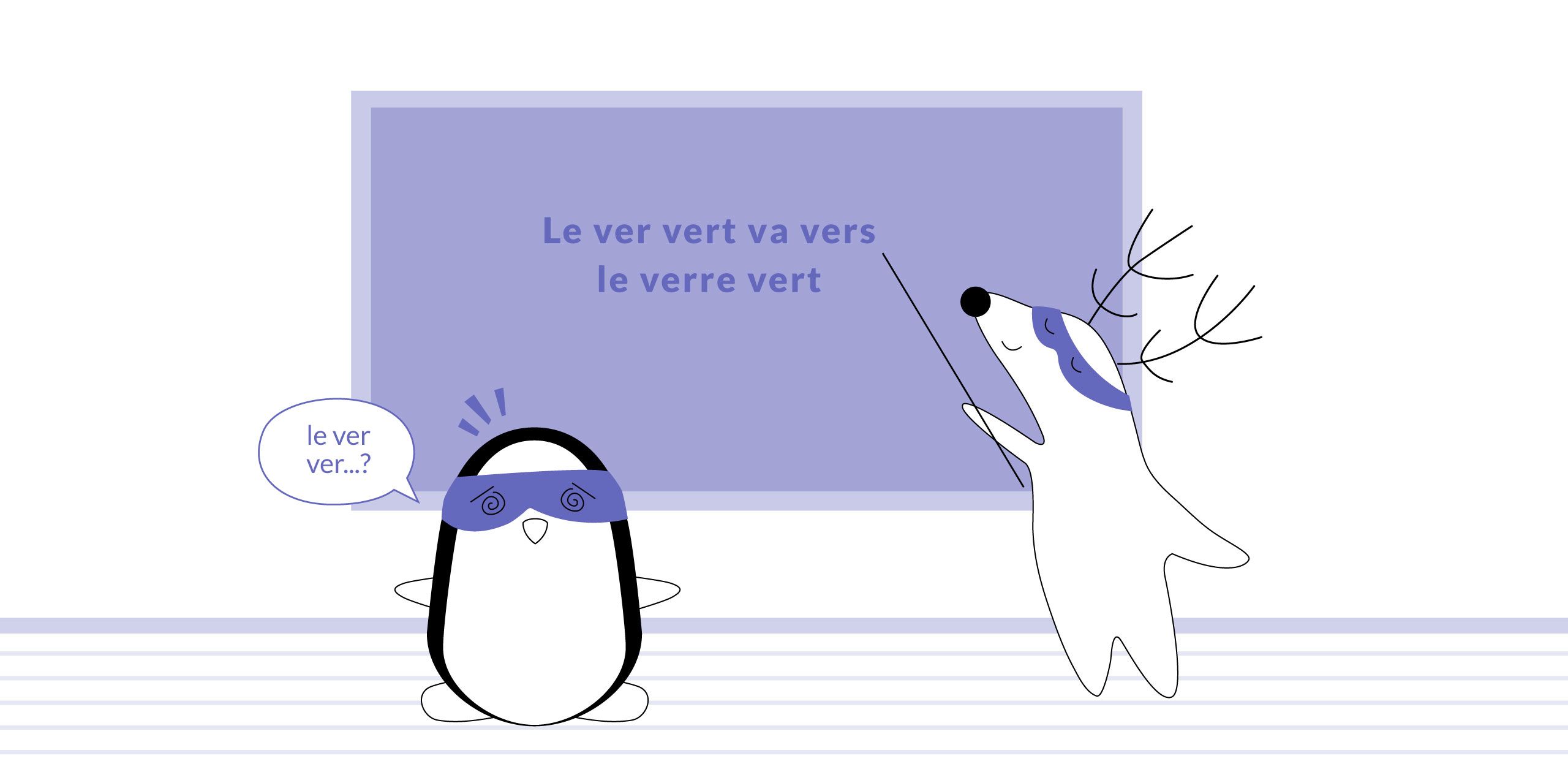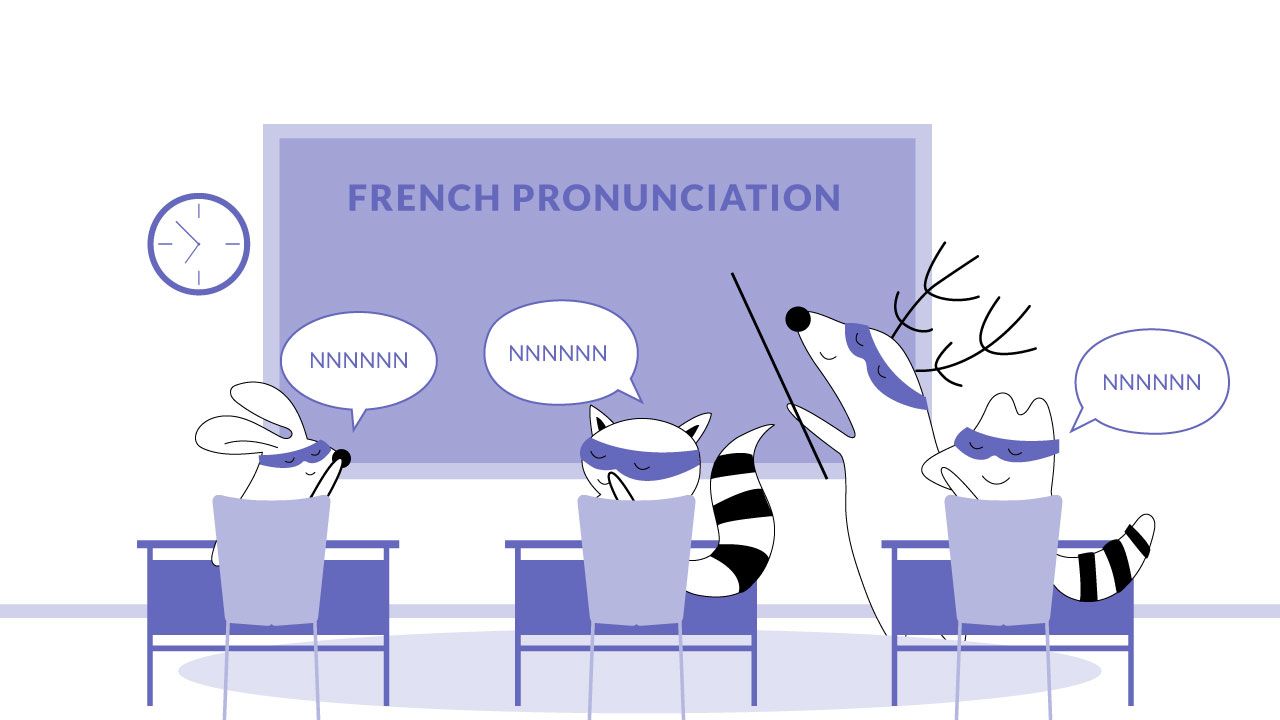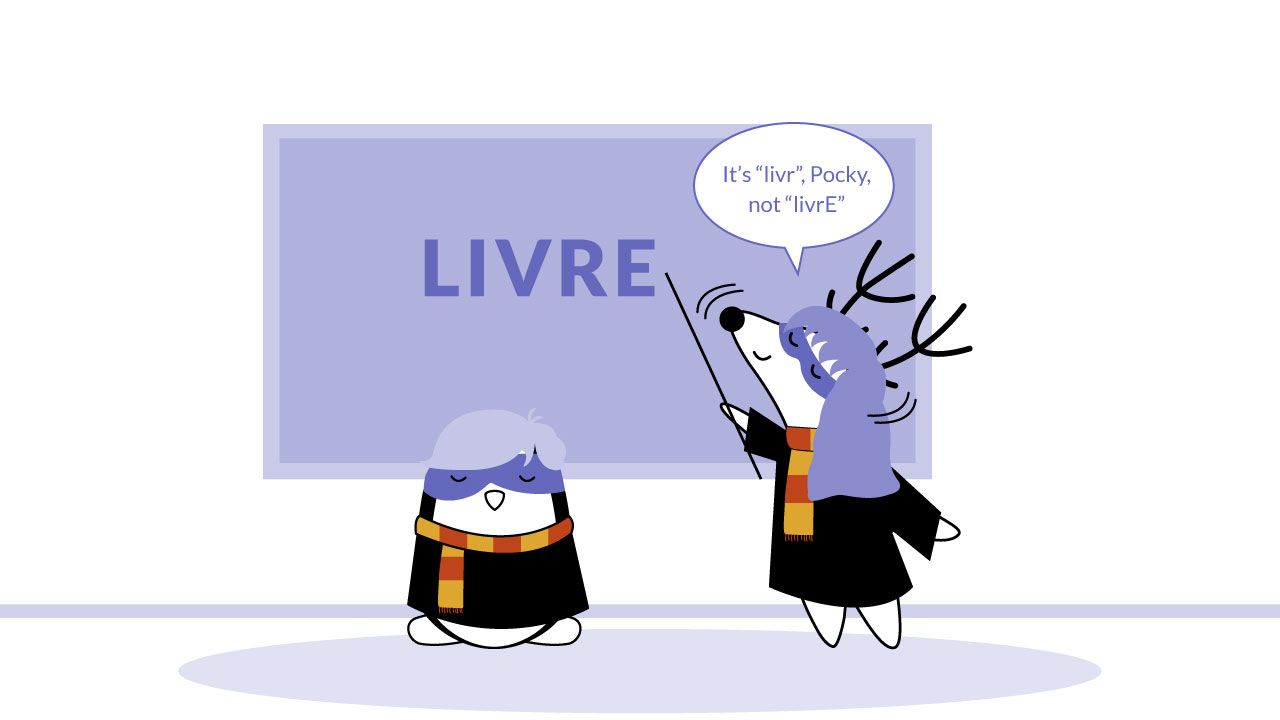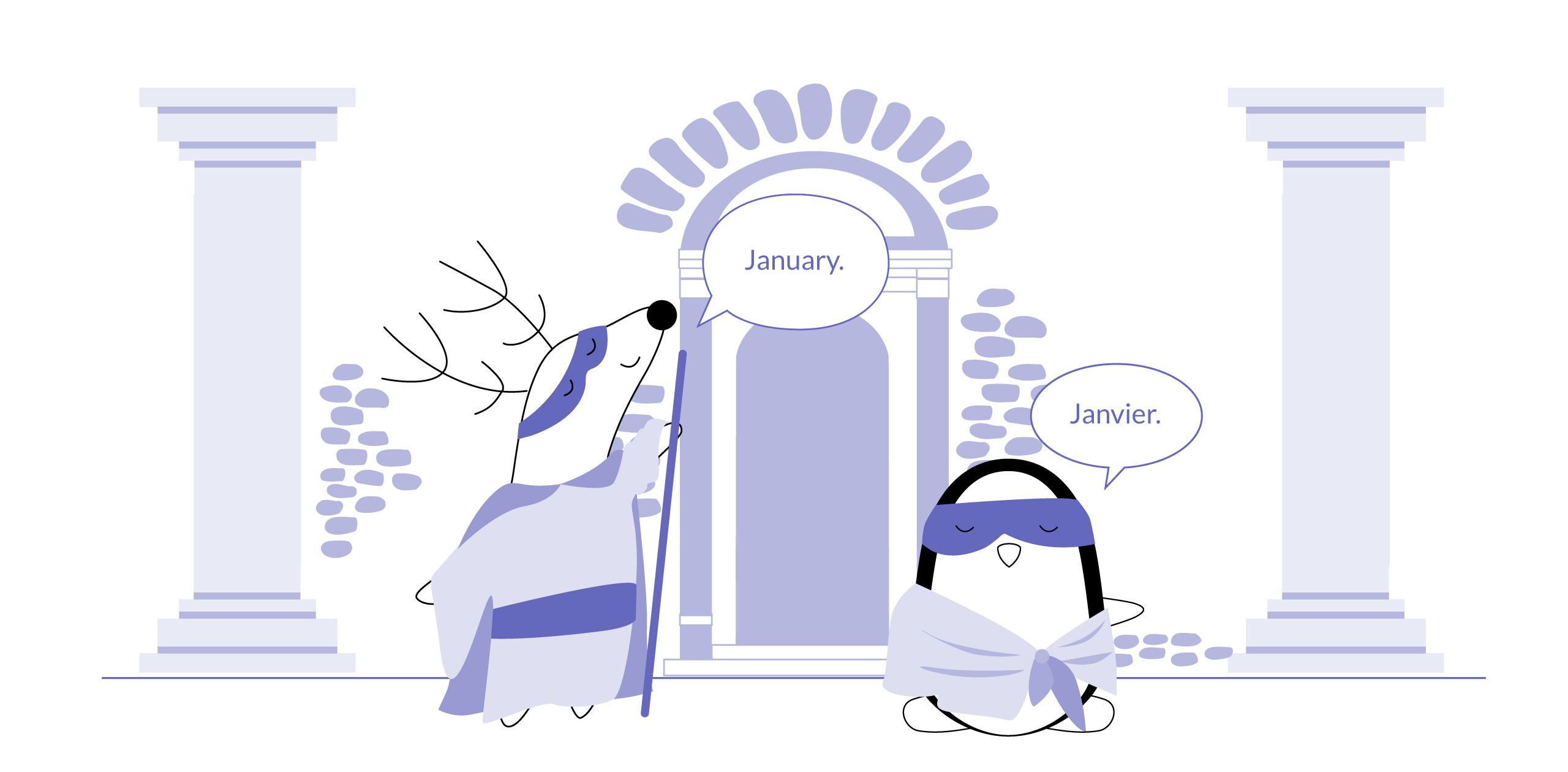
French pronunciation is tough - we’re not going to argue with that. If you only speak English and decide to learn French, you might experience a lot of problems with pronunciation. However, there are ways to ease your language learning journey.
The first thing you can do is check the way French letters of the alphabet are pronounced - this will help you acquire some basic spelling knowledge. This will also be easy, since the English alphabet is very similar to the French one. Then you can learn to pronounce different combinations, accented letters, specific sounds that only exist in French, and everything else.
Learn French with Langster
To help you deal with all of that, we have prepared this simple French pronunciation guide for beginners. Read on, educate yourself on the topic, and make sure you can pronounce any French word like a native speaker.
1. Stress in French
French stress, or l'accentuation, is different from the English one. While in the English language, stress can fall on any syllable in the word - for example, NORmandy or MediteRRAnean - in French, it will always fall on the last syllable of the word. For example, NormanDIE, MéditerranEE.
So, basically, the stress in the word is mostly even, except for the last syllable. That should make your journey to mastering French pronunciation a little bit easier.
Stress and sentences
The situation with the word stress is similar when it comes to the whole sentence. In English, all the words in the sentence retain their individual stress pattern. On the other hand, in French, the last syllable of the sentence will be accented. For example:
English:
Example
Explanation
I’m spending my vacation in Paris.
I’m spENding my vaCAtion in PAris.
French:
Example
Explanation
Je passe les vacances à Paris.
Je passe les vacances à PaRIS.
You may notice in the future that, because of such stress pattern, many French sentences sound as if they were just one word.
2. Accent Marks in French
There are only six vowels in the French language. However, there are also five different accent marks used with those vowels that can easily change their pronunciation. Can you tell the difference between é, è, and ê right away?
Don’t worry, it’s not that hard. Native speakers don’t even think about accents - they are just a natural part of the language. You can master them, too - just see this short table below or visit our article where we talk more about the correct pronunciation and typing of French accent marks.
Here are the six French vowel sounds created by combining accent marks with the French vowels:
| Vowel | Pronunciation | Example | Translation |
|---|---|---|---|
| à | 'ah’ | là | there |
| â | longer 'ah' as in British “bath” | âge | age |
| é | is pronounced like 'ay' | été | summer |
| è | is pronounced like ai in 'fair' | père | father |
| ê | is also pronounced like ai in 'fair' | tête | head |
| ô | is pronounced like 'oh' | hôtel | hotel |
| Vowel | Pronunciation | Example | Translation |
|---|---|---|---|
| à | 'ah’ | là | there |
| â | longer 'ah' as in British “bath” | âge | age |
| é | is pronounced like 'ay' | été | summer |
| è | is pronounced like ai in 'fair' | père | father |
| ê | is also pronounced like ai in 'fair' | tête | head |
| ô | is pronounced like 'oh' | hôtel | hotel |
Other sounds with French accents
When it comes to the remaining French accents, such as le tréma or accent circumflex, the letters they are used with will sound the same as they usually do. These can be used to either indicate that the accented vowel must be pronounced distinctly from the vowel that precedes it or to show a spelling change from Latin.
For example, Noël (Christmas) will be pronounced as "noel." If it wasn’t for the accent, it would be pronounced [nɔl].
French
English
Noël
Christmas

3. French nasal sounds
Spoken French often sounds like someone has plugged their nose up, so n and m are getting lost in the pronunciation. This is because of the French nasal sounds - the ones you pronounce not with your mouth, but with your nose.
Sounds complicated? Don’t worry - nasal sounds only seem tough. Let’s go through them one by one and learn to pronounce every French om, um, and ein.
There are several nasal sounds in French - however, you don’t necessarily need to know how to pronounce each of them. Instead, you can just learn how to pronounce nasal n and m - and this should already be enough.
What exactly is a nasal sound?
Basically, a nasal sound is pronounced when you let the air out of your nose instead of your mouth when speaking, with your vocal cords vibrating. You start pronouncing the word, and when you encounter the nasal sound, you block the air from leaving your mouth - so it’s released through your nose.
And trust us - you already know how to pronounce them. After all, the English language has its own nasal sounds - m, n, and ng.
Now, try to say “sing” or “song.” As you do that, pay attention to the air inside your mouth and note as it gets blocked when the back of your tongue presses against the soft palate.
Now, let’s do another exercise. Try humming the letter “m,” and then the letter “n.” Put a finger under your nose and feel the air - and then put that finger onto your nose and feel the way it vibrates slightly. Try to remember what you’re doing - you’ll repeat it when pronouncing French words that have nasal sounds.

Four French nasal sounds
In French, there are four nasal sounds:
/ã/ or nasal a - pronounced like ang in 'sang'
French
English
centre, jambe, branche
center, leg, connected
/ɛ̃/ or nasal i - pronouned like ahn
French
English
moins, ceinture, bain
minus, belt, bath
/õ/ or nasal o - pronounced like ohn
French
English
talon, tomber, bon
heel, fall, good
/œ/ or nasal u - pronounced like uhn
French
English
un, brun
one, brown
Sometimes you might wonder whether you’ve encountered a regular or a nasal sound. Remember: most often, if an m or n is followed by another vowel, then it’s not nasal.
4. French R
The letter "r" is the most classic, and probably the most fun letter of the French alphabet. It might seem challenging to pronounce at first, and it can really be tricky for many English speakers learning French, but don’t worry. There’s a simple trick that will help you pronounce it just like native speakers do.
First, say the sound /g/. The position of your tongue will be similar to the one you’d need to say a French r. Then, add a little gargle - your mouth can move a bit. The sound that you’re making should be the French “r.”
French
English
Français
French
It might not happen at the first try, though. You can watch some YouTube videos to get the hang of it - and remember to practice.
However, don’t beat yourself up if you have trouble making this sound. You can speak French well and still have an English r - that’s okay. That’s just a part of your own accent!
5. Lettres muettes - Silent letters
If you’re learning French, you might have already encountered many French words where the final letters are not pronounced. Unfortunately, there are quite a few silent letters - or lettres muettes - in French, and the sooner you learn them, the better it will be for your pronunciation.
And yes, there are words in French where you pronounce just one or two letters and leave out all the remaining ones. Don’t worry - you should get used to that pretty quickly.
Silent E at the end of a word
Just like in English e is not pronounced at the end of many words, in French, you have the same situation.
The basic thing you need to remember here is that unless there’s an accent on that e or it’s a part of a two-letter word (such as le or ce), it’s not pronounced.
So, for example, the correct pronunciation for the word “livre” would be /livr/.
French
English
livre
book

Consonants at the end of a word
Not every French consonant is silent at the end of the word. Instead, there are two groups of them: some are usually pronounced, and some are not.
These letters are usually pronounced at the end of a word: b, c, f, l, q, r. For example:
French
English
un truc
a thing (slang)
un bol
a bowl
On the other hand, these letters are usually silent at the end of words: p, g, n, m, s, t, d, x, z. For example:
French
English
froid
cold
chaud
hot
However, remember that the French language is full of exceptions, so you will encounter many words that won’t abide by these rules. Nevertheless, it’s important to learn those two groups - they will make your road to the correct French pronunciation much easier.
Follow these rules, and if at some point you encounter an exception, the French native speakers you’re talking to or your French teacher should correct you.
6. Liaisons
If you have read our other blog posts - for example, the one about saying “happy birthday” in French - you might already know a bit about what a liaison is. And if not, don’t worry - this is actually a pretty easy rule.
The French language is all about the flow. When you’re speaking French, it should sound like you’re reading a poem or singing a song. But sometimes, when two words are combined in a sentence, they might sound awkward together. That’s where the liaison occurs.
For example, you wouldn’t normally pronounce the n at the end of bon or the x at the end of joyeux. However, when wishing someone “bon anniversaire” or “joyeux anniversaire,” you would actually pronounce those letters so that the phrase sounds prettier. So instead of /bõ anniverser/ you would say /bon⤻anniverser/.
French
English
Bon anniversaire !
Happy birthday !
Joyeux anniversaire !
Happy birthday!
When does a liaison occur?
A liaison occurs when the word ending with the silent letter is followed by a word that starts with a vowel. However, it won’t appear in every combination. You should not create a liaison:
- With names
- After et (and)
- Before onze (eleven)
- After nouns
- Before oui
Instead, use liaison:
- After a pronoun
- Before a noun
- With numbers
- With a preposition with one syllable like chez or en
- With indefinite or definite articles (les, des, un)
Another thing to remember is that not every consonant will sound the same inside a liaison and when used on its own. In fact, some consonants will change their spelling when used in a liaison with a vowel. Here’s how:
- D will sound like t
- S and x will sound like z
- N and p will sound like themselves (don’t change)
7. Double L
This combination can be tricky - sometimes, it will sound like /l/ and sometimes - like /y/. That depends on the letter that precedes the double l.
In most cases, for example, after a or o, it will sound just like a regular l. However, when used after i - for example, in fille - it will sound like /y/. This happens with most of the words that have -ille inside of them.
The simplest thing you can do with this rule is to pronounce all the words with -ille using sound /y/ - and learn a few exceptions:
French
English
ville
city
mille
a thousand
tranquille
calm
un million
a million
un milliard
a billion
Lille
a town in France
le bacille
a type of bacteria

Final Thoughts
We hope that our short pronunciation guide was enough for you to master the correct French pronunciation. And if you’re not yet talking like a native French speaker - don’t worry. Your perfect French accent will come in time, you just have to practice more.
If you want more practice, speak French more, listen to French audio recordings, talk more to the native French speakers, and don’t hesitate to use a dictionary when you don’t understand how a certain word is pronounced.
If you want to have a little fun on the go, make sure to download the Langster app. It might not help you speak more French, but you will definitely find a lot of listening practice there. Every day, you will get a new story at your current level. You can listen to it read out loud by a native speaker, check grammar and translation, and do a short quiz afterward.
Sounds interesting? Well, let us just note that we select our stories very carefully, so you won’t only learn French, you’ll also get a daily boost of good and enjoyable news.









